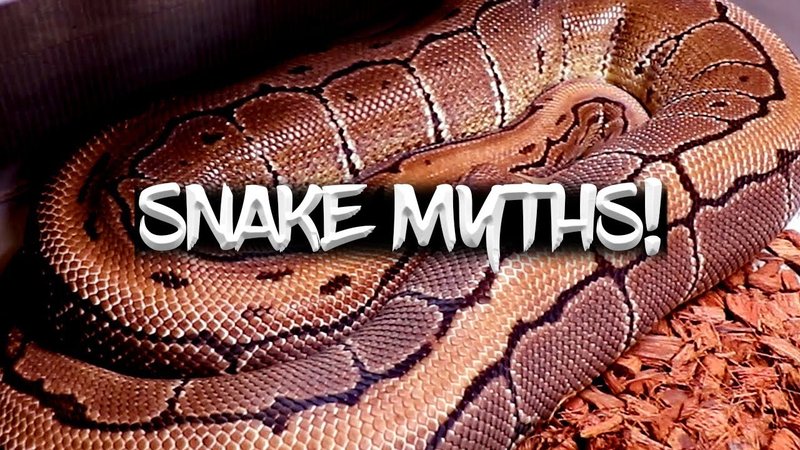
You might be surprised to learn that there are over 3,000 species of snakes worldwide, each with its own unique traits and behaviors. Some are venomous, while others can safely be held in your hand. By separating myths from facts, we can appreciate these fascinating animals for what they truly are. So grab a seat, and let’s dive deep into the world of snakes—a place where the truth might just surprise you.
Myth 1: All Snakes are Dangerous
One of the biggest misconceptions is that all snakes are dangerous. Honestly, while some snakes can pose a threat to humans, the vast majority are harmless. In fact, about 70% of snake species are non-venomous. This means they don’t have the capability to harm you with venom. For example, garter snakes and corn snakes are common but perfectly safe to encounter.
It’s important to recognize that snakes typically avoid human interaction whenever possible. Most would rather slither away than confront a person. If a snake feels cornered, it might bite in self-defense, but that’s true for many wild animals, not just snakes. If you come across one in your backyard or a hiking trail, it’s best to admire it from a distance rather than trying to catch it.
Why the Fear?
The fear of snakes, scientifically known as *ophidiophobia*, can be traced back to cultural stories, movies, or even childhood experiences. This fear often exaggerates the risks. Yes, some snakes like the black mamba or king cobra have potent venom, but remember: these are just a few species among thousands. In the grand scheme, the chances of encountering a venomous snake are low, especially in urban areas.
Snake bite fatalities are rare, thanks to better medical care and awareness. In fact, according to the CDC, there are around 5,000 snake bites in the U.S. each year, but fewer than 10 result in death. That’s a pretty small percentage, right?
Myth 2: Snakes are Slimy
Here’s the thing: snakes are not slimy. If you’ve ever touched a snake and thought it was wet or slimy, that’s just a common misconception. Their skin is actually *dry* and covered in scales, which helps them move smoothly across different surfaces. Think of it like wearing a suit of armor—each scale plays a role in protecting the snake.
Many people confuse the texture of snake skin with slime because they often associate wetness with danger or disgust. But snakes’ scales are tough and dry, made from a protein called keratin, the same stuff found in our hair and nails. This gives them a unique feel that varies from species to species. For instance, some snakes, like the rubber boa, have a soft, smooth texture, while others, like pythons, can feel more rough and scaly.
Why It Matters
Understanding that snakes are not slimy can help reduce fear and discomfort when encountering one. If you ever have the chance to hold a snake (in a safe setting, of course), you’ll likely find it’s not as unsettling as you might have thought. Plus, appreciating the uniqueness of their skin can lead to a better understanding of their role in the ecosystem.
Myth 3: Snakes Can Hypnotize Their Prey
Another intriguing myth is that snakes can hypnotize their prey. It sounds straight out of a cartoon, doesn’t it? But let me explain: this idea typically stems from the way snakes move and how they hunt. When a snake strikes at its prey, it’s not hypnotizing them; it’s actually using its speed and stealth to catch them off-guard.
Some snakes do have an impressive way of tracking their prey through heat-sensing pits or tongue flicking, but that’s far from mind control! They rely on their instincts and natural behaviors. The thought of hypnotism likely comes from observing the calm and still behavior of snakes before they strike, which can create a captivating scene that seems almost magical. But in reality, it’s just plain old survival skills.
The Real Hunting Techniques
Many snakes use different strategies to hunt. For instance, constrictors, like boas or pythons, wrap around their prey and squeeze it until it can’t breathe. Others, like vipers, have a quick strike-and-release style. Each technique is a testament to the snake’s adaptation to its environment, showcasing the incredible variety within the snake world.
Myth 4: Snakes Can’t Hear
You might be wondering if snakes can hear you when you talk. Contrary to popular belief, snakes can hear, but not in the same way humans do. Their hearing is attuned to low-frequency sounds, like vibrations in the ground. Snakes don’t have external ears like we do; instead, they use their jawbone to pick up vibrations, which is pretty smart if you think about it!
This means they can sense movement and sounds from their environment. For example, if you’re walking through grass, a snake may feel the vibrations of your footsteps. However, this doesn’t mean they’re hearing every word you say. So, if you ever find yourself in the woods, keep this in mind: they’re more aware of your presence than you might think!
Why Hearing Matters for Survival
Understanding how snakes use their hearing is crucial for both snakes and humans. For snakes, it means they can detect predators or prey without relying solely on sight. For us, it’s a reminder to be cautious in their habitats. If you spot a snake, it’s wise to keep quiet and give it some space. They’re doing their job in the ecosystem, whether you’re aware of them or not.
Myth 5: Snakes are Cold-Blooded and Feel Nothing
While it’s true that snakes are ectothermic (or cold-blooded), this doesn’t mean they feel nothing. Snakes rely on external heat sources to regulate their body temperature, meaning they can’t generate heat like warm-blooded animals. This often leads folks to think they don’t experience sensations or emotions. But that’s simply not true!
Snakes can feel temperature changes and respond to their environment accordingly. They seek out warmth from the sun or a rock to help maintain their body temperature. Plus, research has shown that snakes can experience stress and discomfort, which is a real consideration for anyone interested in keeping them as pets.
The Importance of Temperature Regulation
For snakes, finding the right warmth helps them be active and hunt effectively. If they get too cold, they can become lethargic and unable to move quickly. This is why you often see snakes basking in the sun—it’s essential for their survival. Moreover, being aware of a snake’s need for warmth can help us create suitable habitats if we’re ever fortunate enough to care for one.
Understanding snakes through facts rather than myths helps us appreciate these remarkable creatures. By embracing the truth, we not only reduce fear but also learn how to coexist with snakes in our environment. Recognizing that most snakes are harmless, feel, and play crucial roles in their ecosystems makes them a vital part of our world.
So next time you hear a myth, take a moment to consider the facts. Maybe you’ve even learned a little something new about these mysterious reptiles. Snakes aren’t just slithering legends; they’re amazing creatures deserving of our respect and curiosity.

